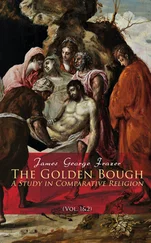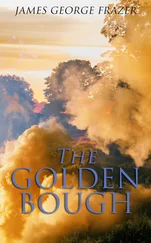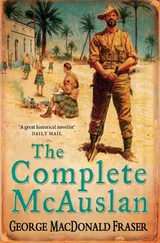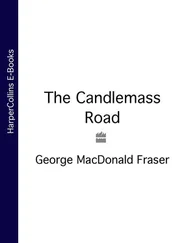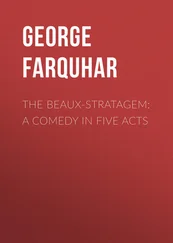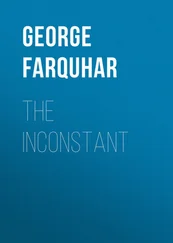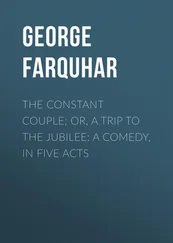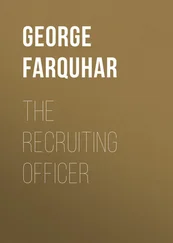George Fraser - The Steel Bonnets
Здесь есть возможность читать онлайн «George Fraser - The Steel Bonnets» — ознакомительный отрывок электронной книги совершенно бесплатно, а после прочтения отрывка купить полную версию. В некоторых случаях можно слушать аудио, скачать через торрент в формате fb2 и присутствует краткое содержание. Жанр: unrecognised, на английском языке. Описание произведения, (предисловие) а так же отзывы посетителей доступны на портале библиотеки ЛибКат.
- Название:The Steel Bonnets
- Автор:
- Жанр:
- Год:неизвестен
- ISBN:нет данных
- Рейтинг книги:4 / 5. Голосов: 1
-
Избранное:Добавить в избранное
- Отзывы:
-
Ваша оценка:
- 80
- 1
- 2
- 3
- 4
- 5
The Steel Bonnets: краткое содержание, описание и аннотация
Предлагаем к чтению аннотацию, описание, краткое содержание или предисловие (зависит от того, что написал сам автор книги «The Steel Bonnets»). Если вы не нашли необходимую информацию о книге — напишите в комментариях, мы постараемся отыскать её.
The Steel Bonnets — читать онлайн ознакомительный отрывок
Ниже представлен текст книги, разбитый по страницам. Система сохранения места последней прочитанной страницы, позволяет с удобством читать онлайн бесплатно книгу «The Steel Bonnets», без необходимости каждый раз заново искать на чём Вы остановились. Поставьте закладку, и сможете в любой момент перейти на страницу, на которой закончили чтение.
Интервал:
Закладка:
Unfortunately, to the ordinary people, war and peace were not very different. The trouble with all Anglo-Scottish wars was that no one ever won them; they were always liable to break out again. There was no future for the Borderer in trying to lead a settled existence, even in so-called peace-time. Why till crops when they might be burned before harvest? Why build a house well, when it might be a ruin next week? Why teach children the trades of peace when the society they grew up in depended for its existence on spoiling and raiding?
And of course there was national hatred, ever growing. The other country was always the author of all ills, and it was natural to take revenge.
So they had to live as best they could, and in the two centuries following the War of Independence the Border developed its system of existence, which was seen in full flower in the sixteenth century, between Flodden and the accession of a Scottish king to the throne of England. It was a system of armed plunder, from neighbours as well as from subjects of the opposite realm. The astonishing thing about it was that, while both governments officially deplored what must be called the reiver economy, they exploited it quite cynically for their own ends. The Borders were an ever-ready source of fighting men, a permanent mobile task force to be used when war broke out. If by some strange process of mass hypnosis, all the Elliots and Armstrongs and the like on one side, and all the Forsters and Musgraves on the other, had suddenly been induced to burn their weapons and become peaceful peasants, there would have been consternation in London and Edinburgh. The Border, in a sense, was a bloody buffer state which absorbed the principal horrors of war. With the benefit of hindsight, one could almost say that the social chaos of the frontier was a political necessity.
In fairness to the two central authorities, they did try to pacify as far as they could, and this not being very far, they too adapted to the special conditions. Rules were drawn up for governing, if that is the word, the turbulent Anglo-Scottish Border society. The Wardens, again both English and Scottish, who were to be the nominal overseers of the community, made their appearance at the time of the War of Independence, and their roles as defenders of their respective national frontiers and co-operating governors of the Marches, developed from there. But the laws that were made specially for the Borders were self-defeating; they were in themselves a recognition of abnormality, and at worst they even encouraged it.
So the reiving system developed. From the Bannockburn era onwards the tenor of Border life was geared to it, and no medieval political development was strong enough to alter it. In a medieval context, what happened on the Border does not stand out especially, because it blended into those violent times. But with the advance of civilisation, the gradual alteration of human values, the tendency—admittedly not all that noticeable sometimes—to prefer diplomacy to violence, the anachronism of Border life was seen in greater relief. In the sixteenth century, when England at least was beginning to look far beyond her own coasts, when the spirit of Western man was being reborn, when internal peace was a not uncommon occurrence, the men of the Border were still going their old ways, lifting and looting, settling their disputes largely by force, clinging to their old customs and their own peculiar ethical code. Theirs was a frontier on which only the fittest had survived; what emerged in the 1500s was a very hardy growth.
1.Hume Brown.
2.Ridpath, p. 173. 3. Ibid.
IV
Border country
Ask a Scotsman where “the Borders” are and he will indicate the counties of Roxburgh, Selkirk, Peebles, and Berwick. This is actually about one quarter of the Borderland, and includes some areas which are not really Border country at all. To most Scots the country which used to be called the West March is not within “the Borders”, a curious example of eastward orientation which has historical roots.
Ask an Englishman where “the Borders” are and he may well not know, but he will recognise the singular “Border”. To him it means the frontier with Scotland and nothing else.
This has to be explained, because the adjective Border in the context of this book covers that much wider area occupied by the old Marches, three in each country, which stretched on the Scottish side from the River Cree to the North Sea coast, and on the English from the coast of Cumberland to that of Northumberland. In Scotland the depth of the Marches was bounded by the Lammermuir Hills and the Southern Uplands; in England they covered, to all intents, the counties of Cumberland, Westmorland, and Northumberland. (It is worth remembering that the frontier line does not run straight east and west between the two countries, but south-west to north-east, and that at some points Scotland is actually south of England.)
The whole region, the very heart of Britain, contains some of the loveliest and some of the bleakest country in the British Isles. Along the central part of the frontier line itself is the great tangled ridge of the Cheviots, a rough barrier of desolate treeless tops and moorland with little valleys and gulleys running every way, like a great rumpled quilt. They are not very high, although they were steep enough to frighten Defoe and make his horse “complain”, but they are bleak and lonely beyond description, ridge after ridge of sward and rough grass stretching away forever, and an eternal breeze sweeping across the tufty slopes. One walks in them with head constantly turning to the long crests on either side, but seeing nobody. Like their relations, the Cumberland fells and the broken foothills of the Southern Uplands, they are melancholy mountains; probably only the Border people feel at home in them, but even the incomer will recognise them as the most romantic hills in the world.
To the north are the Scottish dales, the Scott country which has had all the adjectives lavished on it, and is indeed beautiful, with its bright rivers and tree-lined valleys and meadows, its fairytale hills and its air of timelessness. “The beautiful valleys full of savages”, as someone called them. South of the Cheviots are the Northumberland valleys, less picturesque than their Scottish counterparts, and suffering by comparison with the splendid dales of Lakeland to the west.
At either end of the Cheviots there are coastal plains and good farmlands—they were good even in the sixteenth century—but for the most part the Border is mountain, for where the Cheviots stop the hills to north and south continue, fells and Pennines and Southern Uplands. It is the hills that people remember; “craggi and stoni montanes”, as John Leland called them in the 1530s, and his contemporaries echoed him. “Lean, hungry and waste” was Camden’s view. Even from a distance one can conjure up sinister pictures from the names of the Border hill country—Foulbogskye, Ninestanerig, Muckle Snab, Bloody Bush, Slitrig, Flodden, Blackcleuch, Wolf Rig, Hungry Hill, Crib Law, Foul-play Know, Oh Me Edge, Blackhaggs, and so on; it is obviously not a palm-fringed playground.
The Border country was divided for administrative purposes into six areas known as Marches, three on the Scottish side and three on the English. Each of the six Marches had a governing officer known as a Warden, appointed by their respective governments; a detailed description of their work is given in Chapter XVIII, but for the moment it will do to say that their duties were to defend the frontier against invasion from the opposite realm in war-time, and in peace to put down crime and co-operate with the Wardens across the Border for the maintenance of law and order. Unfortunately they often fell far short in this duty; some of them were actually among the worst raiders and feuders on the frontier. The extent of the Marches which they ruled in the sixteenth century is shown on the pull-out map near the end of the book.
Читать дальшеИнтервал:
Закладка:
Похожие книги на «The Steel Bonnets»
Представляем Вашему вниманию похожие книги на «The Steel Bonnets» списком для выбора. Мы отобрали схожую по названию и смыслу литературу в надежде предоставить читателям больше вариантов отыскать новые, интересные, ещё непрочитанные произведения.
Обсуждение, отзывы о книге «The Steel Bonnets» и просто собственные мнения читателей. Оставьте ваши комментарии, напишите, что Вы думаете о произведении, его смысле или главных героях. Укажите что конкретно понравилось, а что нет, и почему Вы так считаете.

